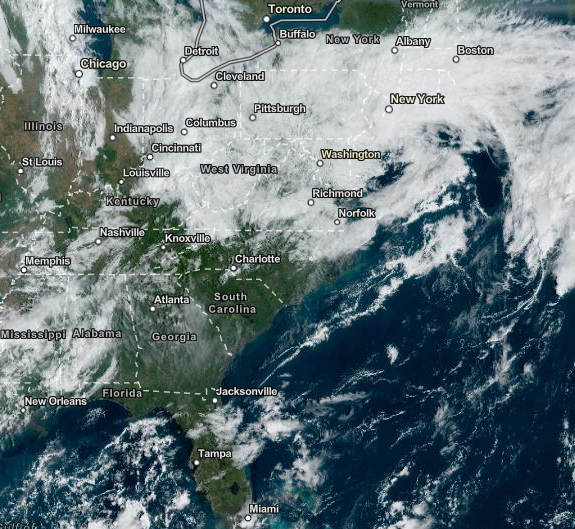Tropical Storm Ophelia is moving closer to New York City and New Jersey, causing dangerous storm surges and rip tides along the East Coast of the United States.
After making landfall in North Carolina during the weekend, Ophelia has relatively weakened but the Atlantic storm still poses a risk in the Northeast region of the US despite its remnants slowly moving offshore, according to the National Weather Service (NWS).
In the coming hours, New York and its surrounding states, including those in the Mid-Atlantic region, are expected to continue experiencing rainfall, gusty winds, and a 'wintry mix' at higher elevations, the NWS forecasts.
While the current storm is still a threat in the region, it is not as formidable as the storm with the same name back in October 2017, when 'Hurricane Ophelia' struck Ireland, the United Kingdom, and mainland Europe, leaving dozens of fatalities.
Is Ophelia a Tropical Storm or a Hurricane?

Ophelia, as mentioned earlier made landfall in North Carolina as a strong tropical storm, particularly on Saturday morning, September 23, while moving in a northward pattern. Before weakening, it caused widespread flooding and power outages in areas from the Mid-Atlantic to the Northeast US, where lingering rain will continue in the short-term period, the NWS says.
Even if Ophelia did not intensify as a hurricane, as previously forecasted, it still brought maximum sustained winds of approximately 70 miles per hour while it made landfall near Emerald Isle around 6:15 a.m. on Saturday.
The tropical storm was at near-hurricane strength when it made landfall in North Carolina, causing not only floodwaters and power outages but also issuance of state emergencies in the state of Virginia, Maryland, and North Carolina.
2023 Atlantic Hurricane Season
Tropical Storm Ophelia formed in the Atlantic Ocean after Hurricane Nigel and Hurricane Lee, which traversed the eastern coast of the US and eventually struck eastern Canada and the New England region earlier in September.
Although the 2023 Atlantic hurricane season is closing near its official end on November 30, the National Hurricane Center (NHC) is continuing to monitor current and developing storms and hurricanes over the Atlantic Ocean.
As of 10:42 a.m. EDT (local time) on Monday, September 25, a newly formed system, named Tropical Storm Philippe and another weather disturbance behind it. Meanwhile, another disturbance has formed in the southeastern Gulf of Mexico, according to the NHC.
In August, the National Oceanic and Atmospheric Administration (NOAA) released its updated season outlook, increasing its previous prediction for the ongoing Atlantic hurricane season to "above normal activity" from a "near normal activity."
This means that the frequency and intensity of Atlantic weather systems, which can intensify into tropical storms, hurricanes, or major hurricanes, will increase. The current hurricane season started on June 1. Since then, six hurricanes have formed in the Atlantic Ocean, including the recent hurricanes Nigel and Lee.
© 2025 NatureWorldNews.com All rights reserved. Do not reproduce without permission.





